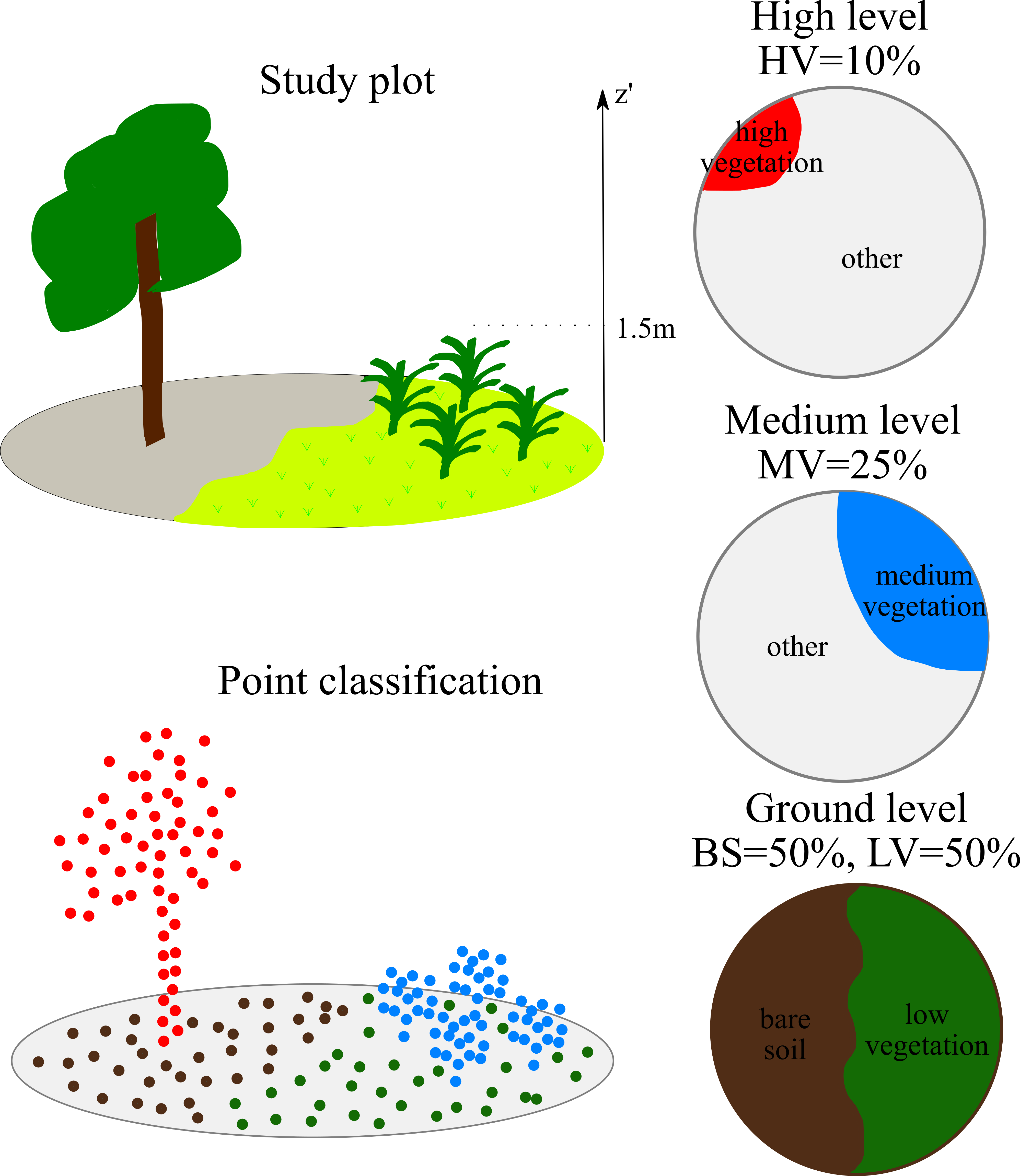PyTorch implementation of a weakly supervised algorithm for the prediction of vegetation coverage of different stratum. The algorithm is based on PointNet model [1] for 3D data classification and segmentation. First, our algorithm compute the pointwise-predictions a point belong to one of 4 classes:
- low vegetation
- bare soil
- medium vegetation
- high vegetation
Then it reprojects each point to the corresponding vegetation stratum by using posterior probabilities. Finally, we compute vegetation ratio for each stratum to get final results.
[1] R. Q. Charles, H. Su, M. Kaichun and L. J. Guibas, "PointNet: Deep Learning on Point Sets for 3D Classification and Segmentation," 2017 IEEE Conference on Computer Vision and Pattern Recognition (CVPR), 2017, pp. 77-85, doi: 10.1109/CVPR.2017.16.
We show how to use the code to reproduce the results in the notebook notebook_demo.ipynb.
The notebook can also be directly run on this google colab.
Our dataset for model training is available here.
The project requires an environment with PyTorch installed (only tested with version 1.7.0). Module torch_scatter is also required. The installation of torch_scatter can be challenging, please, check your CUDA and PyTorch version and carefully follow the instructions indicated below.
The project requires GDAL library to save the results to a GeoTIFF file. If you have difficulties installing GDAL, just delete create_tiff() function from utils/create_final_images.py. The result is equally saved to a .png image.
We suppose that you already have pytorch installed. Please, use requirements.txt to install other packages by launching python -m pip install -r requirements.txt.
Launch this code to check your TORCH and CUDA versions if you don't know them.
import torch
def format_pytorch_version(version):
return version.split('+')[0]
TORCH_version = torch.__version__
TORCH = format_pytorch_version(TORCH_version)
def format_cuda_version(version):
return 'cu' + version.replace('.', '')
CUDA_version = torch.version.cuda
CUDA = format_cuda_version(CUDA_version)
print("TORCH")
print(TORCH)
print("CUDA")
print(CUDA)Then replace {TORCH} and {CUDA} by the obtained values to install the corresponding packages:
pip install torch-scatter -f https://pytorch-geometric.com/whl/torch-{TORCH}+{CUDA}.html
pip install torch-sparse -f https://pytorch-geometric.com/whl/torch-{TORCH}+{CUDA}.html
pip install torch-cluster -f https://pytorch-geometric.com/whl/torch-{TORCH}+{CUDA}.html
pip install torch-spline-conv -f https://pytorch-geometric.com/whl/torch-{TORCH}+{CUDA}.html
pip install torch-geometric
The code is launched from main.py.
It can be launched from IDE, as well as from console with precising the arguments. Please, check the code for different arguments or do python main.py --help.
